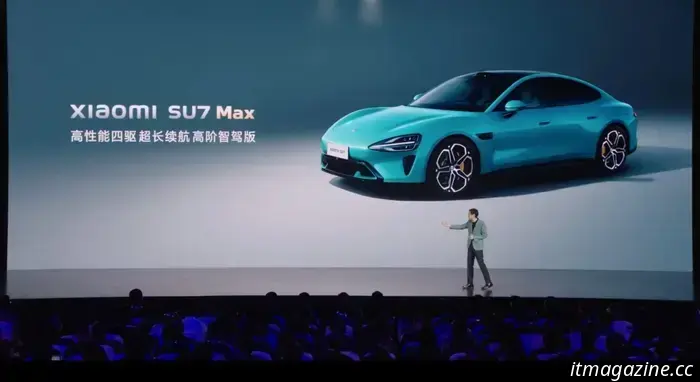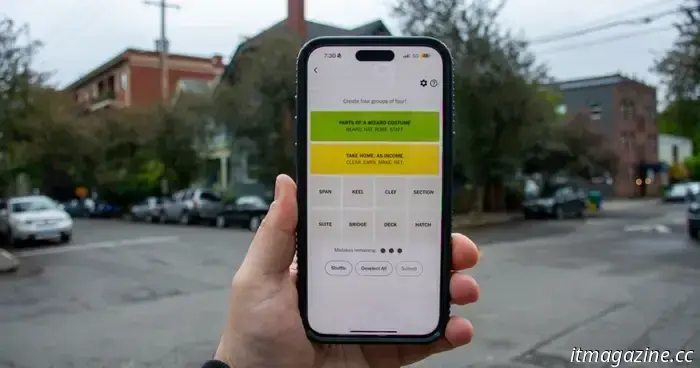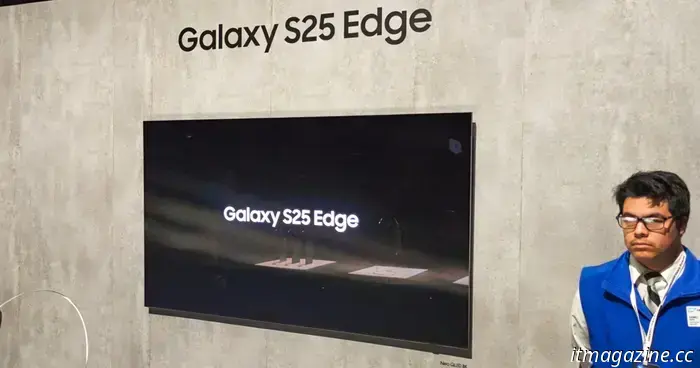
Five crucial details regarding a severe crash involving a Xiaomi electric vehicle that resulted in three fatalities.
Lei Jun, the founder and CEO of Xiaomi, addressed a press event where the company launched its first electric vehicle model, the SU7, in Beijing on Thursday, March 28, 2024.
A tragic incident involving a Xiaomi SU7 that resulted in the deaths of three college students on March 29 in Tonglin, eastern China, has intensified pressure not only on the tech giant but also on numerous local automakers whose advanced assisted driving systems have become significant selling points. Xiaomi's shares, listed in Hong Kong, dropped an additional 21% on Monday after a challenging week for the company, with CEO Lei Jun asserting that the firm would take responsibility for the incident, causing a decrease of over HK$125 billion ($16 billion) in its market value. Meanwhile, the Tongling city's transport bureau initiated a task force to investigate the crash, according to local media reports. The company admitted that its Navigate On Autopilot, an assisted driving feature, was operational on the highway at around 116 kilometers per hour (72 mph) just before the accident. As more information about the incident circulates on Chinese social media, there are growing concerns that renewed doubts about the reliability of such technologies may hinder the rapid growth of the industry and inject further uncertainty into China's electric vehicle market.
Here are key details about the deadly crash, which could underscore the ongoing repercussions for Xiaomi as an emerging player in the electric vehicle sector and China’s status as the largest and most vibrant automotive market globally.
#1 Only three seconds passed from when the Xiaomi SU7 issued a risk warning about upcoming obstacles to the driver taking manual control and the vehicle colliding with a guardrail. The U.S. National Highway Traffic Safety Administration (NHTSA) states the average response time to an imminent alert is 2.3 seconds without external threats, while guidelines from the Chinese government last September recommended a minimum of 10 seconds between a warning and driver intervention.
#2 The crashed vehicle lacked lidar sensors, which provide superior precision and range in detecting objects in low-light conditions compared to cameras and radar. There has been an ongoing debate regarding the necessity of this costly component for autonomous driving, with an increasing number of Chinese EV manufacturers adopting Tesla's camera-centric approach to enable advanced driver assistance functions in their more affordable models. The standard model of the Xiaomi SU7 resembles the Porsche Taycan and is priced at RMB 215,900 ($29,535).
#3 The vehicle's autonomous emergency braking (AEB) system, typically reliant on cameras, radar, and ultrasonic sensors for detecting objects and interpreting road signs, failed to notify the driver or engage the brakes, leading to a crash into a concrete guardrail at 97 km/h. Xiaomi stated that the AEB system can activate brakes automatically up to 135 km/h in the event of an impending collision with a lead vehicle, and up to 120 km/h when a stationary vehicle is encountered at night. However, it is not designed to stop or avoid smaller or static objects like traffic cones, barriers, and guardrails, which can potentially cause false braking incidents.
#4 The car’s battery was provided by BYD's subsidiary FinDreams Battery, while CATL, another battery supplier for Xiaomi, denied rumors on April 2 that the battery from the crash-affected vehicle was supplied by them. The so-called “blade battery” features a lithium-ion phosphate (LFP) composition and a sleek, elongated design, offering better thermal stability and increased resistance to collisions compared to typical lithium-ion batteries that use cobalt or nickel, allowing for longer ranges but at a higher cost. However, both BYD and CATL only supply battery cells, while Xiaomi handles the assembly of these cells into packs.
#5 The driver may be held responsible for her involvement in the accident, as all driver-assist technologies available in China are classified as level two or lower, requiring drivers to remain fully attentive and ready to intervene in emergencies. The driver reportedly became "slightly distracted" and had her hands off the wheel for an unspecified amount of time during the eight minutes leading up to the crash, according to information disclosed by Xiaomi (translated). Several major Chinese automotive and tech companies, such as Huawei, GAC, and Zeekr, are aiming to launch legally sanctioned level 3 semi-autonomous driving features as soon as later this year.
Jill Shen is a Shanghai-based technology reporter covering Chinese mobility, autonomous vehicles, and electric cars. You can connect with her via email at [email protected] or on Twitter at @jill_shen_sh.

Other articles
 The developers have announced that Hollow Knight: Silksong will be launched across multiple generations.
The eagerly awaited sequel to Hollow Knight will launch on both Switch and Switch 2.
The developers have announced that Hollow Knight: Silksong will be launched across multiple generations.
The eagerly awaited sequel to Hollow Knight will launch on both Switch and Switch 2.
 Moto G Stylus 2025 makes its debut to entice potential Galaxy S25 Ultra customers.
Motorola has unveiled the Moto G Stylus 2025, aiming to attract potential buyers of the Galaxy S25 Ultra.
Moto G Stylus 2025 makes its debut to entice potential Galaxy S25 Ultra customers.
Motorola has unveiled the Moto G Stylus 2025, aiming to attract potential buyers of the Galaxy S25 Ultra.
 Looking for a Copilot+ PC? Check out the Microsoft Surface Pro 11 — now $450 off.
The Microsoft Surface Pro 11, designed as a Copilot+ PC to fully utilize the AI assistant, is currently available at Best Buy with a discount of $450.
Looking for a Copilot+ PC? Check out the Microsoft Surface Pro 11 — now $450 off.
The Microsoft Surface Pro 11, designed as a Copilot+ PC to fully utilize the AI assistant, is currently available at Best Buy with a discount of $450.
 NYT Connections: clues and solutions for Tuesday, April 8.
Connections is the latest puzzle game from the New York Times, and it can be pretty challenging. If you require assistance in solving today's puzzle, we're here to support you.
NYT Connections: clues and solutions for Tuesday, April 8.
Connections is the latest puzzle game from the New York Times, and it can be pretty challenging. If you require assistance in solving today's puzzle, we're here to support you.
 Here are some reasons why you may not be able to buy a Galaxy S25 Edge immediately.
Excited for the Samsung Galaxy S25 Edge? Its initial launch is limited to Korea and China only. Keep an eye out for a worldwide release!
Here are some reasons why you may not be able to buy a Galaxy S25 Edge immediately.
Excited for the Samsung Galaxy S25 Edge? Its initial launch is limited to Korea and China only. Keep an eye out for a worldwide release!
Five crucial details regarding a severe crash involving a Xiaomi electric vehicle that resulted in three fatalities.
Many are worried that renewed concerns regarding the reliability of ADAS software could hinder the rapidly growing industry and increase uncertainty around China's electric vehicle progress.
